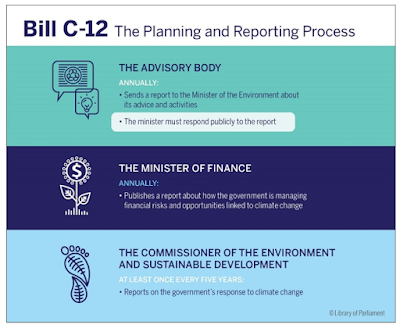On the day the bill became law, the government announced new elements of its plan to reduce greenhouse gas emissions: From 2035, all cars and passenger trucks sold in Canada must be zero-emissions.
This post explores the parallels between Canada's targets for greenhouse gas and tobacco use reductions, and whether the measures being put in place to address climate change might also benefit public health if applied to tobacco use.
The parallels
Canada's strategies to control tobacco and to address climate change share a number of common characteristics. They both:
- primarily address the negative consequences of combustion
- involve the shared jurisdiction of federal, provincial and territorial governments
- seek to modify the behaviour of consumers and producers
- are challenged by the interests of those with vested commercial interests
- are the subject of international framework conventions
- are embracing technological solutions, suchy as renewable energy or alternative nicotine
Smoking: The federal government has adopted tobacco control strategies since 1963, but quantified targets for general prevalence were first adopted in 2001, when the aim was to reach 20% prevalence in 2006 and reduce cigarette consumption by 30%. The goal of 12% was subsequently set for 2012, and in 2017 Health Canada adopted the goal of "less than 5% tobacco use by 2035". In 2013, as part of the World Health Organization's Global NCD Action Plan, Canada participates in the goal of reducing smoking prevalence between 2010 and 2025 by 30% (from 20.8% to 14.6%).
These goals are shown in the figure below, together with data on annual levels between 1990 and 2019. To illustrate the rates of progress of both goals on the same graph, prevalence targets have been converted into the approximately equivalent absolute level of cigarette consumption. (Data and sources can be downloaded here).
- New Brunswick has aligned its target with the federal objective of less than 5% by 2035.
- Quebec, Ontario and British Columbia have set a target of 10% prevalence, aiming to achieve this in 2023 (ON, BC) and 2025 (QC).
- Alberta set a target for 12% prevalence for 2022.
- Newfoundland and Labrador aims to reduce smoking to 18.1% by 2025.
Legal accountability is only one tool that the climate change strategies are using that tobacco control has not yet embraced. Others include:
- An integrated federal-provincial planLessons from climate change
The Pan-Canadian Framework on Clean Growth and Climate Change is a national framework plan that includes commitments by federal, provincial and territorial governments. A federal-provincial approach for tobacco control formerly existed as the National Strategy To Reduce Tobacco Use (NSTRTU), which was on place from the mid 1980s to the late 1990s: this inter-jurisdictional approach was disbanded shortly after its last strategy was agreed to in 1999.
- Equitable pricing protection across Canada
As a component of the pan-Canadian framework, provincial governments are free to set their own carbon pricing systems but the federal government will act unilaterally if provincial carbon pricing measures do not meet the national benchmark. The Greenhouse Gas Pollution Pricing Act ensures minimal use of pricing to reduce GHG.
A similar challenge exists for tobacco, where provincial taxes vary considerably across provinces. Provincial taxes in Quebec, for example, result in cigarettes in that province being markedly cheaper than in most other provinces. (They are also very cheap in Ontario). The federal government could close that gap, as it does for carbon, by applying a higher federal tax in Ontario and Quebec than it does in provinces which meet the internationally recommended level of 70% of purchase price. We have previously recommended that the federal government use its tax power to ensure a minimum $0.45 tax per cigarette.
- Accountability
The new Canadian Net-Zero Emissions Accountability Act initiates several measures in support of the attainment of Canada's climate change goals. These include requirements for the Ministers of Environment and Finance to prepare and make public reports on progress, structured systems for public engagement and expert advice, and requirements for independent oversight. Should climate change targets not be met, the law requires governments to provide details on how they will get back on track. (This concept was first introduced to Parliament in 2007, and was twice defeated before its adoption this spring).
- A phase-out plan for the most harmful products, and incentives to help make it happen
The climate change strategy includes the intention to phase out certain combustible products, including coal-fired energy and cars and passenger trucks. Federal regulations are being used to phase out coal-fired energy generators by 2030. Almost a decade ago, the federal phased out incandescent light bulbs because they were too energy inefficient.
The recent announcement that conventional cars and passenger trucks could not be legally sold after 2035 identifies that economic incentives will be employed to achieve the target. The same carrots-and-sticks approach could be used to phase out combustible cigarettes, or to relocate tobacco sales to age-gated specialty shops could simlarly





